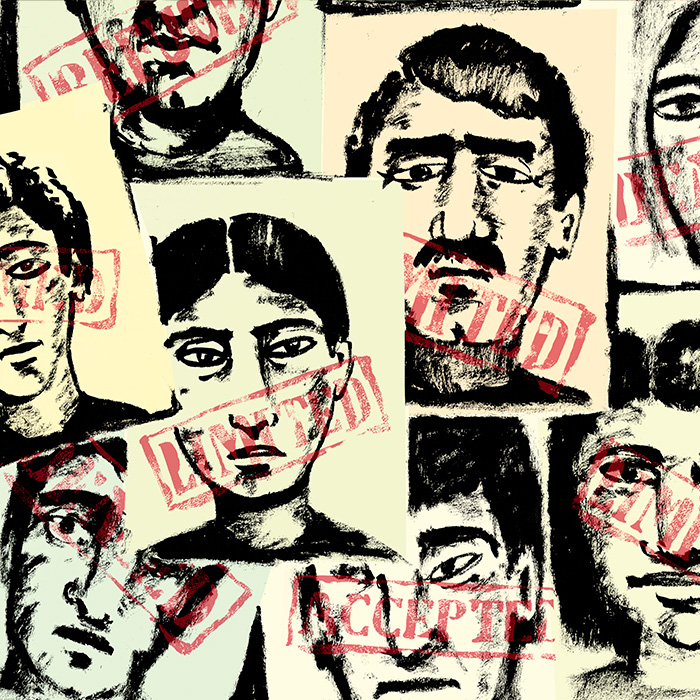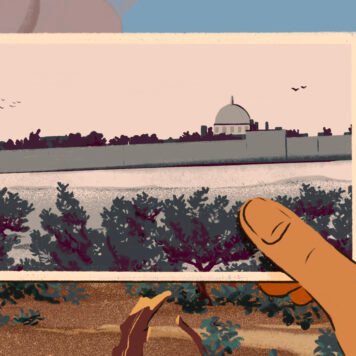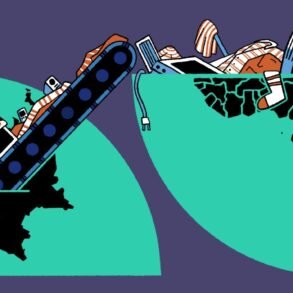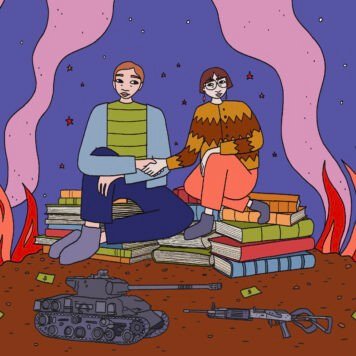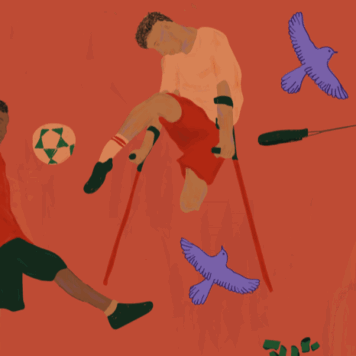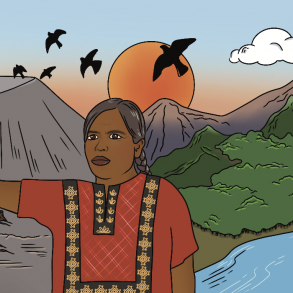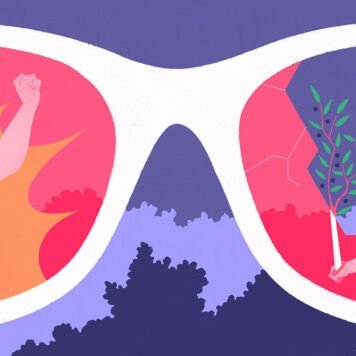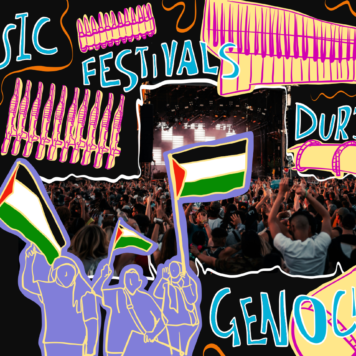In Palestine, apartheid came about as a result of the Zionist settler colonial project which established the state of Israel in 1948 – an event known as the Nakba (or ‘catastrophe’) in Arabic.
Palestinians have long understood Zionist settler colonialism as a continuous project aimed at erasing and replacing the Indigenous population of Palestine. One mechanism settler colonial projects employ to suppress surviving Indigenous populations is through apartheid.
This was pioneered by Afrikaners in South Africa who needed an effective way to suppress the majority Black population. Ironically, apartheid was institutionalised in South Africa in 1948, the same year as the Nakba.
Following the end of apartheid in South Africa, in 1998, the Rome Statute of the International Criminal Court declared apartheid as a crime against humanity and defined it as “inhumane acts committed in the context of an institutionalised regime of systematic oppression and domination by one racial group over any other racial group or groups and committed with the intention of maintaining that regime.”
Although many associate apartheid with South Africa, the definition is universally applicable and can adopt various characteristics and manifest itself in various ways. This international law definition thus challenges the misconception that apartheid was an exceptional case that has since ended.
Since 1948, the Israeli regime has expanded the mechanism of apartheid over the Palestinian people to control, maintain and most importantly dominate.
This complex system of segregation works in the service of maintaining Jewish Israeli supremacy over the Palestinian inhabitants of the land. One of the key ways in which the Israeli regime maintains and sustains apartheid is through fragmentation. Indeed Israel has divided Palestinians into four categories; Palestinians with Israeli citizenship subject to Israeli civil law, Palestinians with permanent residency status in the eastern part of Jerusalem, Palestinians in the occupied West Bank and Gaza under Israeli military laws, and Palestinian refugees living in exile outside of historic Palestine.
What is the historical and current context?
After decades of mobilising support and accumulating resources, in 1948 the Zionist settler colonial project established the state of Israel through the ethnic cleansing of Palestine.
Over 750,000 Palestinians were expelled from their homeland and over 400 Palestinian villages and towns were destroyed. Those who were forced out became refugees in neighbouring countries, they and their descendants now number an estimated 7 million.
To this day, the Israeli regime denies Palestinians’ internationally enshrined right of return to their homes of origin and restitution of their properties.
Following the ethnic cleansing in 1948, Zionists forces had conquered nearly 80% of historic Palestine and those that survived (around 100,000) were placed under a strict military regime.
In the early years of the state, there were discussions amongst Zionist commanders around expelling this surviving population, but in the end they decided to give them nominal citizenship and enshrine their inequality into the basic laws of the state. The Israeli regime makes a clear legal distinction between nationality and citizenship in order to institutionalise discrimination and segregation.
This moment was the birth of Israeli apartheid. Today this community are referred to as the Palestinian citizens of Israel and they live within what is known as the 48 territories – the land occupied by Zionist forces in 1948. The two communities live very separate, different and unequal lives.
Israeli apartheid was expanded to the rest of historic Palestine in 1967, when they conquered the West Bank, Gaza and Syrian Golan. The Palestinian populations were placed under military rule, but unlike their brethren across in the 48 territories, were not given citizenship.
Almost immediately, the Israeli government started building settlements exclusively for Israeli Jews in the newly occupied territories. Along with it, they built infrastructure such as roads, power plants, and agricultural farms – again for Israeli Jews only.
The United Nations Security Council adopted resolution 242 in November 1967 which called for the immediate withdrawal of Israeli forces from the newly occupied territories. Since then, the international community has by and large considered Israeli settlements in the 1967 territories to be illegal.
To this day, Palestinians in the West Bank and Gaza live under military rule and a brutal siege respectively. Every aspect of their lives is heavily controlled by the Israeli regime, from movement to access to basic necessities.
The importance of language: how has sanitising the language been detrimental to exposing the truth of the situation?
The language of “apartheid” is important because it accurately describes the day to day reality of the Palestinian people. It is a term that is enshrined in international law as a crime against humanity and thus has to be brought to an end.
The South African case study provides us with some concrete examples of actions that can be taken against apartheid regimes; boycott and sanctions.
But apartheid isn’t the whole picture; in Palestine apartheid functions as a tool of Israeli settler colonialism. This framework is crucial to understanding the situation in its entirety. Indeed, should the Israeli regime of apartheid end, it won’t necessarily lead to decolonisation.
Israeli settler colonialism seeks to erase the Indigenous Palestinian people from their land. We cannot forego this framework when talking about Israeli apartheid –the two terms function together.
Myth busting
-
- Israel can’t be an apartheid state because it has Arabs in the parliament!
There are Palestinian citizens of Israel in the Knesett (the Israeli parliament) but they are not equal to their Jewish Israeli peers. This is because in Israel, unlike in most countries, citizenship and nationality are distinct terms and categories.
While there is such a thing as Israeli citizenship, there is no Israeli nationality; rather, nationality is designated along religious/ethnic lines which is recorded in registry databases. As the Israeli state defines itself constitutionally as Jewish, those with Jewish nationality trump the non-Jewish (mostly Palestinian) population. As the Jewish nation and the state of Israel are considered one and the same, the exclusion of non-Jewish citizens is a consequence.
This differentiation between citizenship and nationality allows for a sophisticated and covert racist system not necessarily detectable to the unknowing observer. The system divides people into two categories (Jews and non-Jews), embodying the very definition of apartheid.
- Israel can’t be an apartheid state because it has Arabs in the parliament!
-
- Palestinians have their own government – the Palestinian Authority – so how can it be apartheid?
The Palestinian Authority was established following the 1993 Oslo Accords as an interim governing body. It was granted “autonomy” over certain enclaves in the West Bank similar to the bantustans in apartheid South Africa. Essentially it operates as a service provider for the Palestinian population in certain areas of the West Bank.But the Palestinian Authority has no real power and certainly is not a sovereign body. This is perhaps best demonstrated by the fact that even the Palestinian Authority president has to get permission from the Israeli regime to leave the West Bank.
- Palestinians have their own government – the Palestinian Authority – so how can it be apartheid?
- It’s a problem with right-wing politics in Israel, not the state itself.
The Israeli state is a settler colonial one, established following the ethnic cleansing of Palestine in 1948. It has constitutionally asserted this colonial character by defining itself as a state for its Jewish citizens only and for maintaining its military occupation of the 1967 territories. The so-called left in Israel is as complicit with colonisation and apartheid as the right. Indeed the settlement enterprise was spearheaded by an Israeli Labour government in 1967.
What does Palestinian resistance to apartheid look like?
Palestinians have not been silent in the face of Israeli apartheid. Indeed their resistance has been multifaceted and diverse over many decades.
From the First Intifada in the late 1980s that mobilised popular civil disobedience to the more recent Unity Intifada of 2021 which sought to unite Palestine’s fragments across colonial borders. Palestinians have not only been steadfast on their land, they have spent decades organising and mobilising around the world to garner support for their liberation struggle.
The biggest Palestinian grassroots movement is the BDS Movement which models itself on the anti-apartheid struggle in South Africa. It calls on the international community to boycott, divestment and sanction the Israeli regime for its crimes against the Palestinians people.
What can you do?
Podcasts
- Rethinking Palestine: Amnesty Report on Israeli Apartheid with Saleh Hijazi
- Rethinking Palestine: Limitations and Possibilities of the apartheid framework with Lana Tatour
Books
- Israel and South Africa: The many faces of apartheid by Alan Pappé
- Israeli Apartheid: A Beginner’s Guide by Ben White
Reports
- Al Haq report on Israeli Apartheid: A tool of Israeli Zionist settler colonialism; ‘Israeli Apartheid: Tool of Zionist Settler Colonialism’
- UN Economic and Social Commission for Western Asia report on Israeli Practices Towards the Palestinian People and the Question of Apartheid
- Amnesty report on Israel’s Apartheid Against Palestinians
Articles
- Dismantle What? Amnesty’s Conflicted Messaging on Israeli Apartheid
- What is Zionism? – Shado Magazine
- Decolonisation on (in) the ground: Farming as colonial resistance in Palestine – Shado Magazine
- There is nothing complicated about the situation in Palestine – Shado Magazine
Graphics
- Visualizing Palestine on Israeli Apartheid; Divide and Dominate — Visualizing Palestine
Websites
